
Loch Lomond & The Trossachs National Park: Scotland's Natural Gem
Discover the natural beauty and adventure of Loch Lomond & The Trossachs National Park, Scotland's premier destination for outdoor activities and serene landscapes.
Loch Lomond & The Trossachs National Park is a breathtaking natural reserve located in Scotland. It spans over 720 square miles and offers visitors a stunning landscape of rolling hills, dense woodlands, and shimmering waters. The park is home to the famous Loch Lomond, the largest freshwater lake in Britain by surface area, which is ideal for a variety of water activities such as boating, kayaking, and fishing. The Trossachs region within the park is often referred to as the 'Highlands in Miniature' due to its picturesque scenery and rugged terrain. This area is perfect for hiking enthusiasts, with numerous trails that cater to all levels of experience. Notable peaks include Ben Lomond, which provides spectacular views of the surrounding countryside. Wildlife lovers will be delighted by the diverse fauna found in the park. Deer, red squirrels, and a variety of bird species can be spotted throughout the year. The park also boasts several charming villages such as Balloch and Callander, where visitors can immerse themselves in local culture and enjoy traditional Scottish hospitality. Whether you're seeking adventure or tranquility, Loch Lomond & The Trossachs National Park has something for everyone.
Local tips in Loch Lomond & The Trossachs National Park
- Visit during the spring or autumn for milder weather and fewer crowds.
- Wear sturdy footwear if you plan on hiking; the terrain can be rugged.
- Explore the smaller lochs and hidden glens for a more secluded experience.
- Check local events as the park often hosts cultural festivals and gatherings.
- Don't miss a boat tour on Loch Lomond for stunning views from the water.
Loch Lomond & The Trossachs National Park: Scotland's Natural Gem
Loch Lomond & The Trossachs National Park is a breathtaking natural reserve located in Scotland. It spans over 720 square miles and offers visitors a stunning landscape of rolling hills, dense woodlands, and shimmering waters. The park is home to the famous Loch Lomond, the largest freshwater lake in Britain by surface area, which is ideal for a variety of water activities such as boating, kayaking, and fishing. The Trossachs region within the park is often referred to as the 'Highlands in Miniature' due to its picturesque scenery and rugged terrain. This area is perfect for hiking enthusiasts, with numerous trails that cater to all levels of experience. Notable peaks include Ben Lomond, which provides spectacular views of the surrounding countryside. Wildlife lovers will be delighted by the diverse fauna found in the park. Deer, red squirrels, and a variety of bird species can be spotted throughout the year. The park also boasts several charming villages such as Balloch and Callander, where visitors can immerse themselves in local culture and enjoy traditional Scottish hospitality. Whether you're seeking adventure or tranquility, Loch Lomond & The Trossachs National Park has something for everyone.
When is the best time to go to Loch Lomond & The Trossachs National Park?
Iconic landmarks you can’t miss
Loch Lomond Shores
Experience the breathtaking beauty and vibrant shopping at Loch Lomond Shores, a perfect blend of nature and retail therapy in Scotland.
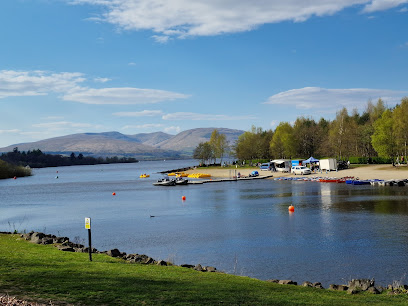
SEA LIFE Loch Lomond Aquarium
Explore SEA LIFE Loch Lomond Aquarium, where adventure meets education in an enchanting underwater world surrounded by nature's beauty.
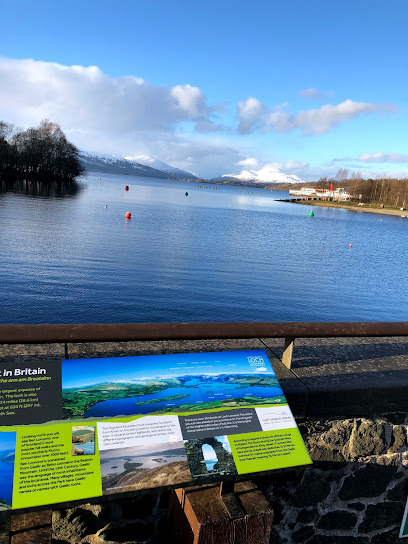
Falls Of Falloch
Explore the breathtaking Falls of Falloch, a stunning waterfall and hiking area in the heart of Scotland, perfect for nature lovers and adventurers.
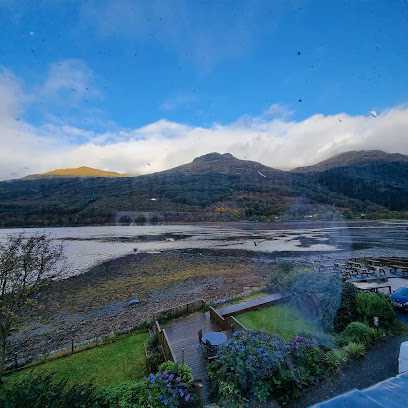
Loch Lomond
Discover the breathtaking beauty of Loch Lomond, Scotland's largest freshwater lake, offering stunning landscapes and endless outdoor adventures.
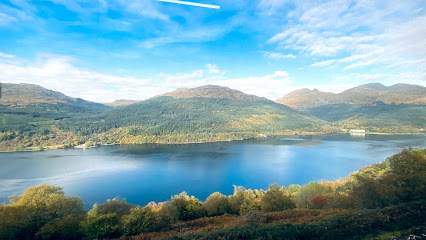
Balloch Castle & Country Park
Experience the natural beauty and historical charm of Balloch Castle & Country Park, a perfect getaway in the heart of Loch Lomond.
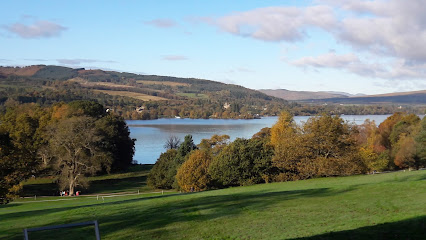
Queen Elizabeth Forest Park
Explore the breathtaking beauty of Queen Elizabeth Forest Park, a national treasure in the Scottish Highlands with stunning landscapes and abundant outdoor adventures.
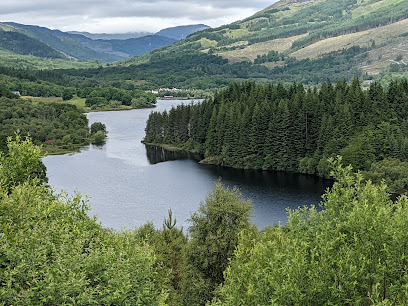
Loch Lomond Faerie Trail
Discover the magic of the Loch Lomond Faerie Trail, where enchanting sculptures and lush landscapes create an unforgettable experience in the Scottish Highlands.
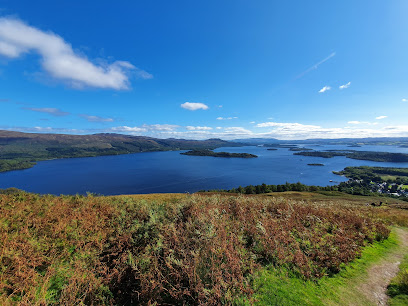
Inveruglas Pyramid - An Ceann Mòr
Discover the breathtaking beauty of Inveruglas Pyramid - An Ceann Mòr, the ultimate viewpoint over Loch Lomond in Trossachs National Park.
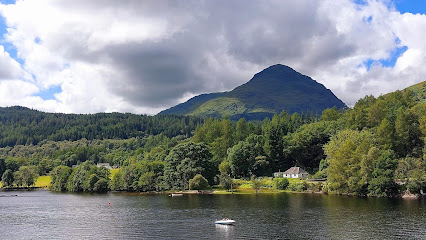
Ben Lomond
Explore the breathtaking beauty of Ben Lomond, a Scottish mountain offering stunning views, hiking trails, and serene parkland for unforgettable outdoor adventures.
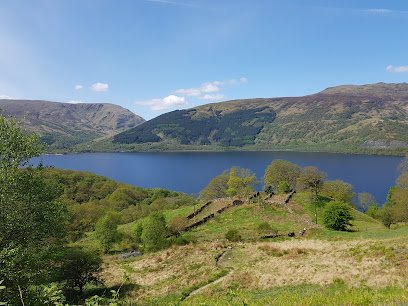
Maid of The Loch
Explore the beauty of Loch Lomond aboard the Maid of The Loch, Scotland's last paddle steamer, and immerse yourself in a rich maritime heritage.
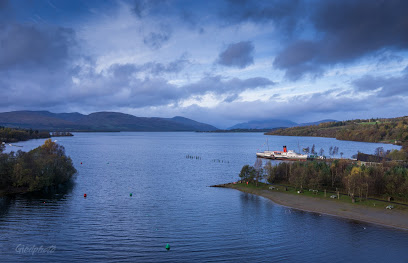
RSPB Scotland Loch Lomond
Explore the breathtaking landscapes and rich wildlife at RSPB Scotland Loch Lomond, a premier nature reserve in the heart of Scotland.
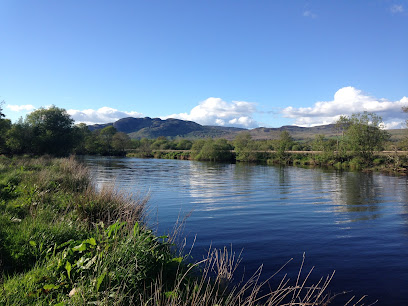
Conic Hill
Discover the breathtaking views and natural beauty of Conic Hill, a stunning mountain peak near Loch Lomond, perfect for outdoor enthusiasts and nature lovers.

Loch Lomond National Nature Reserve (Inchcailloch)
Discover the enchanting landscapes and rich biodiversity at Loch Lomond National Nature Reserve, a top destination for nature lovers in Scotland.
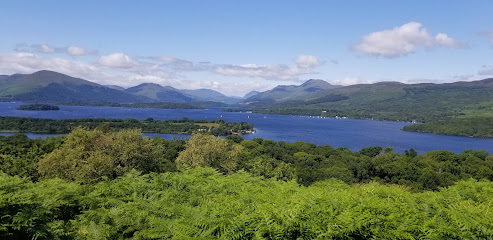
Luss View Point
Experience the stunning beauty of Loch Lomond at Luss View Point, a must-see destination for nature lovers and photography enthusiasts in Scotland.

Duck Bay
Experience the serene beauty of Duck Bay, a scenic escape on the shores of Loch Lomond, perfect for relaxation and gourmet dining.
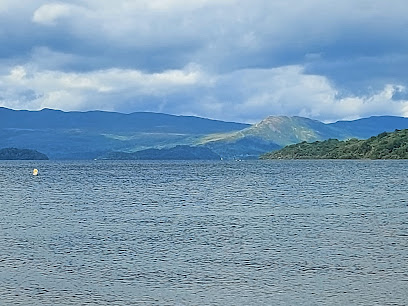
Unmissable attractions to see
Hampden Park
Discover the iconic Hampden Park, Scotland's national stadium, and immerse yourself in the rich history of Scottish football and culture.
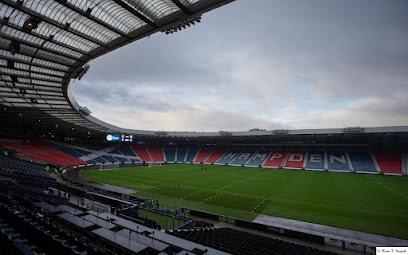
Inveraray Jail and Escape Room
Explore the rich history and captivating stories at Inveraray Jail, a unique historical landmark and museum in Scotland.
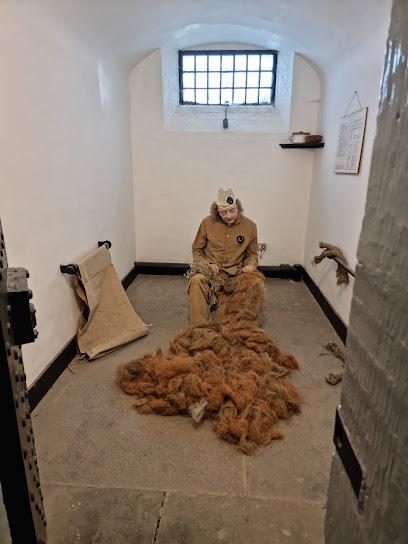
Barras Market
Experience the eclectic charm of Barras Market, Glasgow's vibrant hub for unique finds, local delicacies, and cultural exploration.
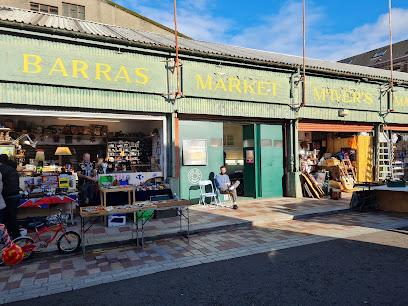
The Lodge Forest Visitor Centre
Discover the beauty of nature at The Lodge Forest Visitor Centre, your gateway to adventure in Queen Elizabeth Forest Park.
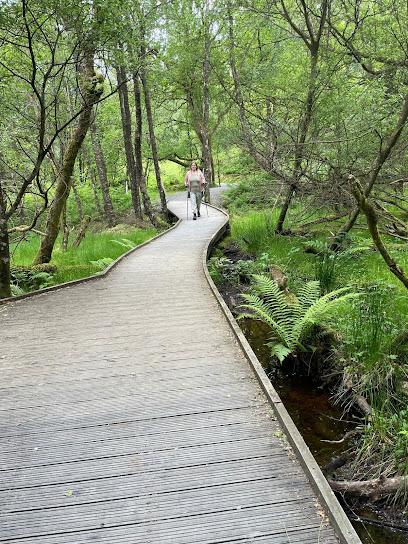
Finnich Glen
Explore the magical Finnich Glen near Glasgow, where stunning landscapes meet rich Scottish folklore, perfect for hiking enthusiasts and nature lovers.
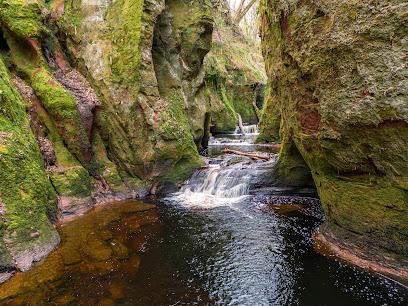
Ben Lomond
Explore the stunning landscapes of Ben Lomond, a hiker's paradise and a serene getaway in the heart of Scotland's natural beauty.
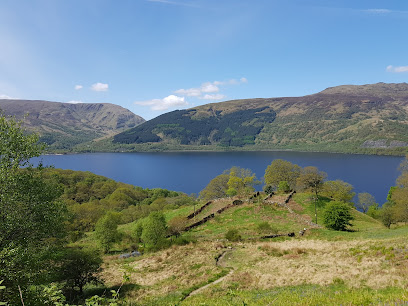
Ben Lomond
Discover the breathtaking beauty of Ben Lomond, an iconic mountain peak near Stirling, offering stunning views and unforgettable hiking experiences.

Loch Lomond Bird of Prey Centre
Explore the stunning Loch Lomond Bird of Prey Centre, where conservation meets adventure in a breathtaking natural setting.
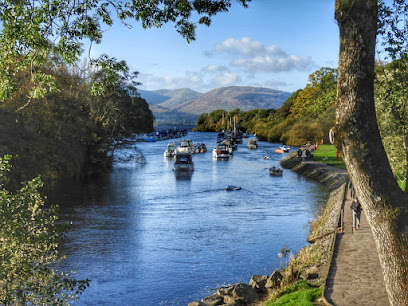
Three Lochs Forest Drive
Explore the stunning natural beauty of Three Lochs Forest Drive, a scenic journey through Scotland's enchanting landscapes and rich wildlife.
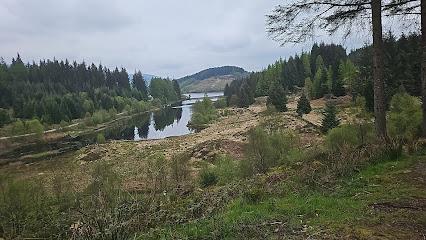
Maid of The Loch
Experience the timeless beauty of Loch Lomond aboard the historic Maid of The Loch, a scenic paddle steamer offering unforgettable journeys through Scotland's landscapes.
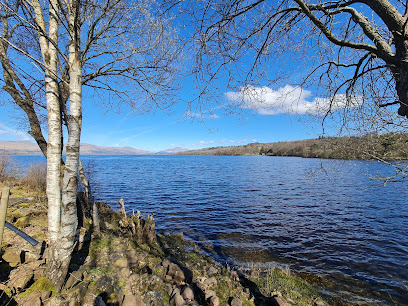
Loch Lomond Seaplanes
Discover the breathtaking beauty of Loch Lomond from the sky with a thrilling seaplane adventure, capturing Scotland's stunning landscapes.

Loch Lomond National Nature Reserve (Inchcailloch)
Experience the breathtaking beauty and tranquility of Loch Lomond National Nature Reserve, a perfect retreat for nature lovers and adventure seekers in Scotland.
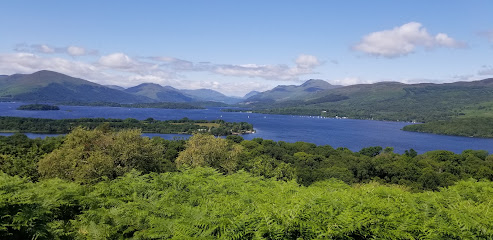
Tom Weir Statue
Discover the Tom Weir Statue in Balmaha, a beautiful tribute surrounded by the stunning landscapes of Loch Lomond, perfect for reflection and photography.
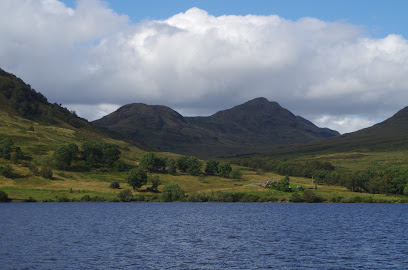
Luss Visitor Centre
Discover the natural beauty of Luss at the Luss Visitor Centre, where local flavors meet stunning landscapes in the heart of Scotland.
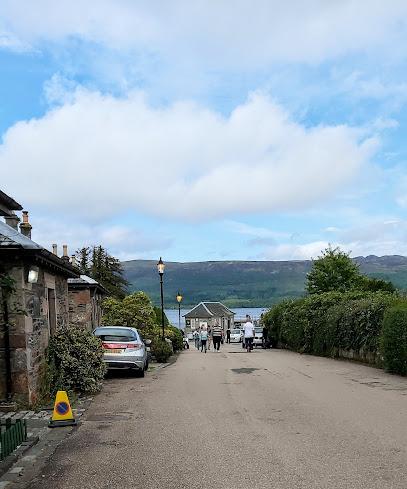
Duck Bay
Discover the natural beauty and serene atmosphere of Duck Bay, a top destination for travelers seeking relaxation and stunning views near Loch Lomond.
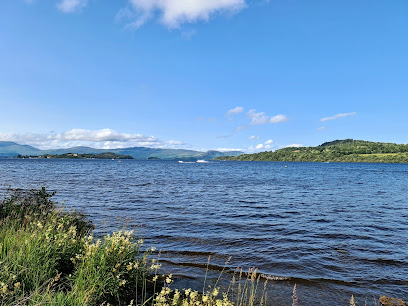
Essential places to dine
The Drovers Inn
Experience authentic Scottish hospitality at The Drovers Inn near Loch Lomond—where tradition meets comfort in breathtaking surroundings.
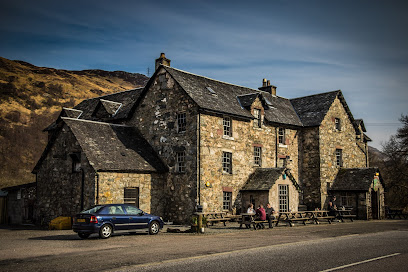
Oak Tree Inn
Discover comfort at Oak Tree Inn in Balmaha - where cozy accommodations meet delicious Scottish cuisine amidst stunning Loch Lomond views.

McDonald's
Experience iconic American fast food at McDonald's in Balloch – perfect for tourists craving quick bites and familiar flavors.
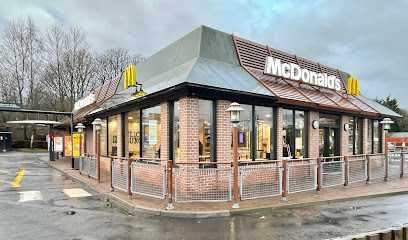
Tullie Inn
Discover Tullie Inn: A traditional British pub offering hearty cuisine and local ales near Loch Lomond.
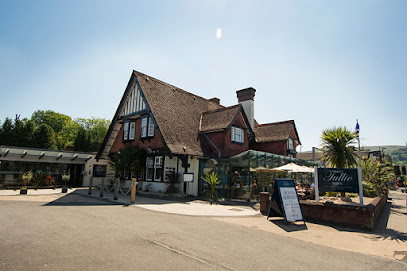
Village Inn
Experience cozy dining with stunning views at The Village Inn by Loch Long - a must-visit pub in Arrochar.
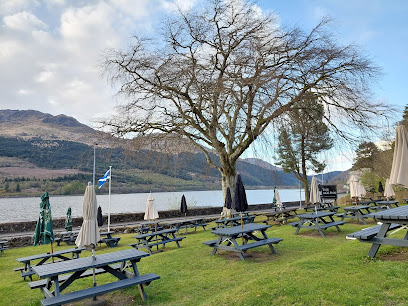
Clachan Inn
Discover the historic Clachan Inn in Drymen—your perfect retreat near Loch Lomond with delicious cuisine and warm Scottish hospitality.

The Village Rest Luss
Experience authentic Scottish cuisine at The Village Rest Luss - where every meal comes with stunning views and local charm.

Slanj Restaurant
Discover Slanj Restaurant in Tarbet: A cozy haven serving exquisite Scottish cuisine amidst breathtaking natural beauty.
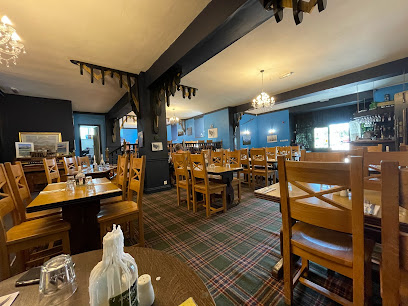
Cucina
Discover Cucina: An enchanting Italian restaurant in Balloch offering authentic flavors, delightful ambiance, and exceptional service for all occasions.
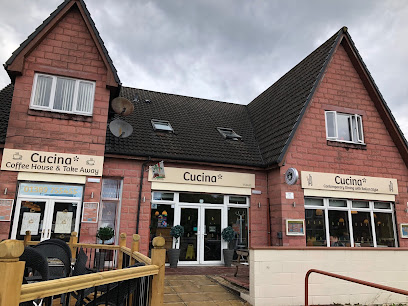
Colquhoun's Restaurant
Experience authentic Scottish cuisine at Colquhoun's Restaurant by Loch Lomond - where every meal comes with stunning views.
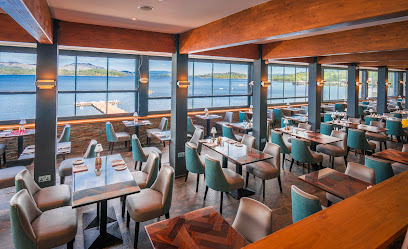
The Boat House
Experience culinary excellence at The Boat House by Loch Lomond – where breathtaking views meet locally inspired dishes.
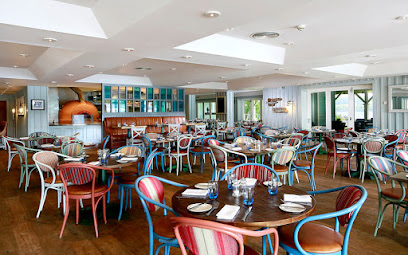
The Cruin
Experience unparalleled beauty at The Cruin, a stunning wedding venue on Loch Lomond offering exquisite dining and breathtaking views.
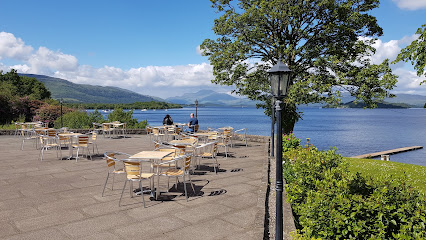
Waterhouse Inn Balloch
Discover Scottish charm at Waterhouse Inn Balloch – your gateway to Loch Lomond's stunning landscapes and delightful local cuisine.

The Pier Kitchen & Bar
Experience delightful dining with breathtaking views at The Pier Kitchen & Bar in scenic Balloch.

The Clansman Bar Restaurant
Savor delectable grilled dishes in a cozy setting at The Clansman Bar Restaurant in Glasgow - a must-visit for culinary enthusiasts.
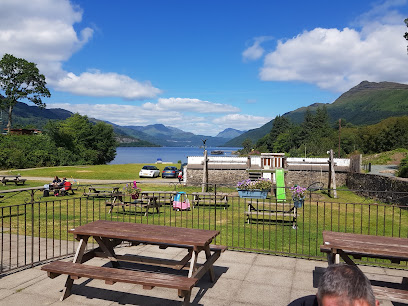
Markets, malls and hidden boutiques
Loch Lomond Shores
Experience the perfect blend of shopping, dining, and breathtaking nature at Loch Lomond Shores.
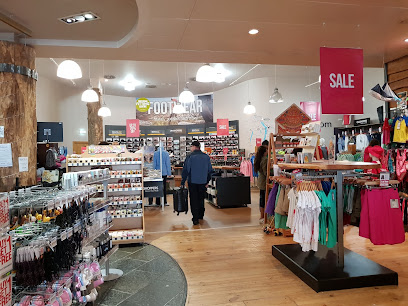
Co-op Food - Balloch
Discover the best of local shopping at Co-op Food in Balloch, where convenience meets community spirit.
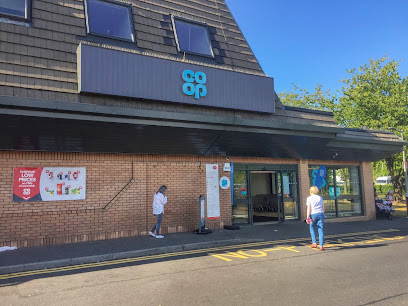
Caulders Garden Centre Loch Lomond
Explore the beauty of nature at Caulders Garden Centre Loch Lomond, where shopping meets dining in a picturesque setting.

Coach House Coffee Shop and Store
Discover the warmth of Coach House Coffee Shop in Luss, where quality coffee and homemade treats await you in a stunning lakeside setting.
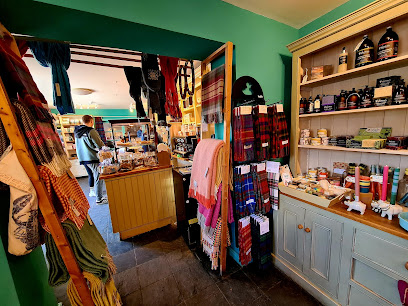
St Mocha Coffee Shop and Ice Cream Parlour
Experience the perfect blend of coffee and ice cream in the heart of Balmaha, a charming retreat for all visitors exploring Loch Lomond.
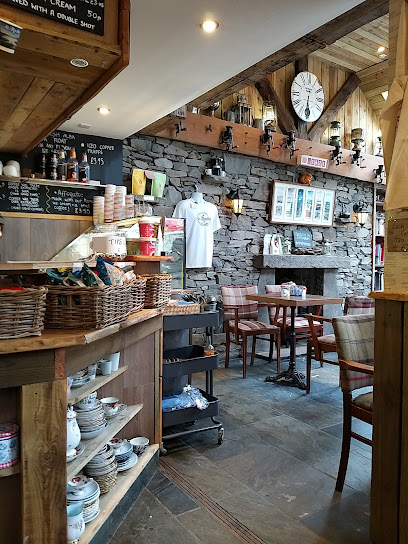
House of Fraser
Discover style and quality at House of Fraser, nestled in the scenic Loch Lomond Shores - a must-visit for fashion lovers and tourists alike.
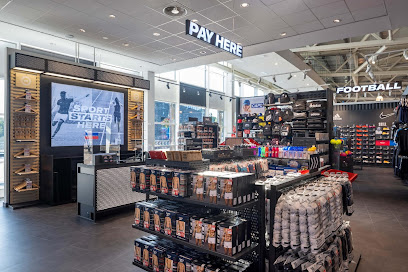
Auchentullich Farm Shop
Experience the taste of Scotland at Auchentullich Farm Shop with fresh produce, artisanal treats, and a cozy coffee shop in a stunning countryside setting.
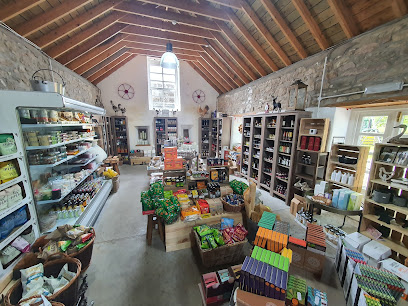
Braeside Stores
Discover convenience and local charm at Braeside Stores in Arrochar, your one-stop shop for travel essentials and local souvenirs.
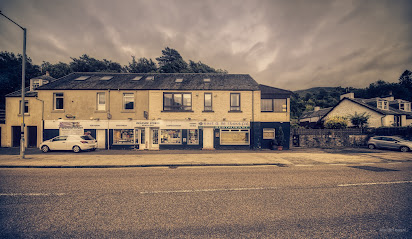
Luss General Store
Explore the charming Luss General Store for unique souvenirs and local treasures that encapsulate the beauty and culture of Scotland.
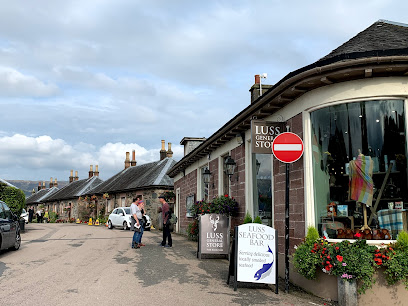
Loch Lomond Gift House
Explore Loch Lomond Gift House for unique Scottish souvenirs and local crafts, capturing the essence of your visit to the stunning Loch Lomond area.
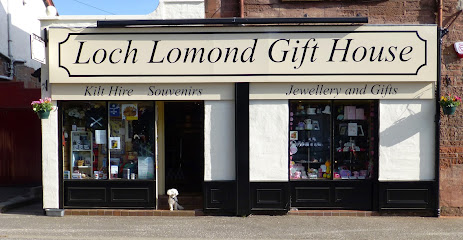
Village Shop
Discover the heart of Luss at the Village Shop, where local flavors meet convenience in a charming Scottish setting.
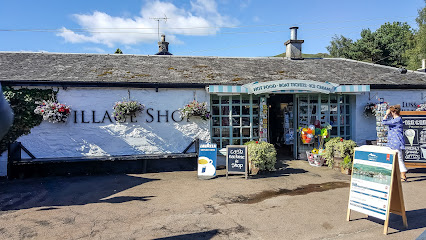
Wild Highlands Coffee House
Discover the cozy charm of Wild Highlands Coffee House, your go-to spot for coffee, tea, and breathtaking views in Balloch.
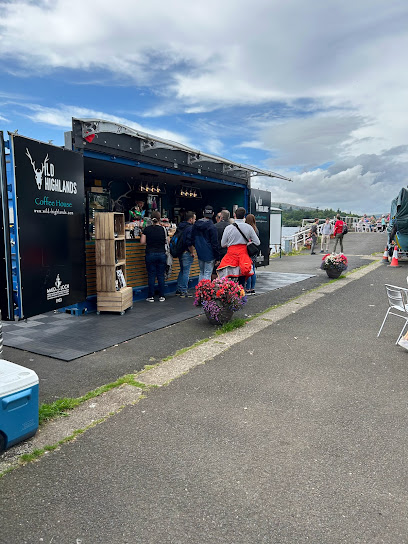
Hawkshead
Explore the great outdoors with quality gear from Hawkshead, your ultimate destination for outdoor clothing and equipment near Loch Lomond.
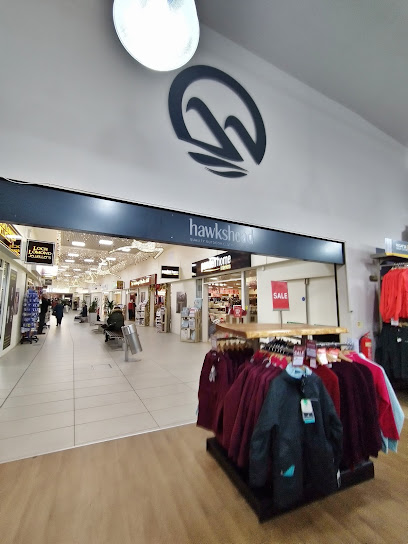
Lomond Stores
Discover Lomond Stores in Balloch: Your convenient stop for local snacks and essentials near Loch Lomond's stunning landscapes.
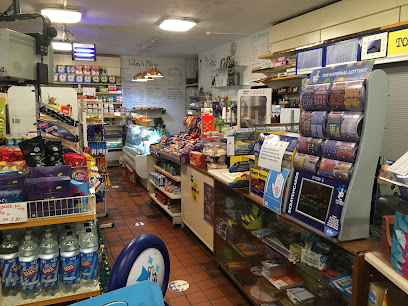
Balmaha Village Shop
Discover the charm of Balmaha Village Shop, your one-stop destination for gifts, hiking essentials, and local treasures in the heart of Loch Lomond.
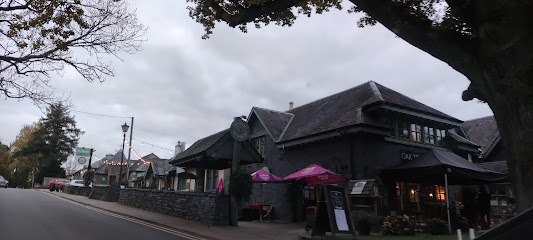
Essential bars & hidden hideouts
The Drovers Inn
Experience the charm of The Drovers Inn, an 18th-century haven offering traditional Scottish hospitality amidst the stunning landscapes of North Loch Lomond.
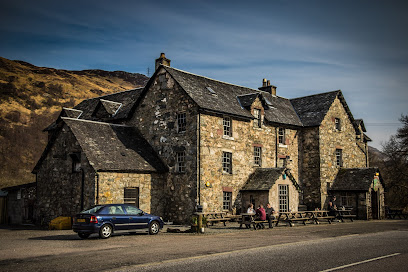
Oak Tree Inn
Discover the inviting charm of Oak Tree Inn in Balmaha, offering delightful dining and comfortable accommodations near Loch Lomond's stunning landscapes.

Queen Of The Loch
Experience the charm of Queen Of The Loch, a delightful pub in Balloch offering traditional Scottish cuisine and stunning views of Loch Lomond.

The Balloch House
Experience the charm of The Balloch House, a perfect pub retreat offering delicious food and stunning views near Loch Lomond.
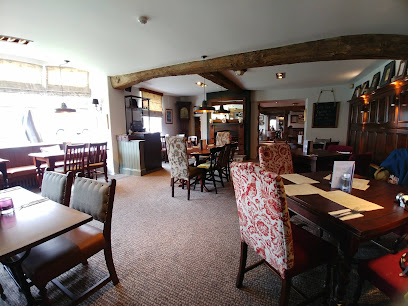
Tullie Inn
Experience the warmth of Tullie Inn in Balloch, where traditional British cuisine meets a cozy pub atmosphere, perfect for all visitors.
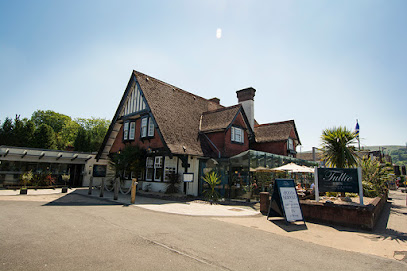
Village Inn
Experience the charm of the Village Inn, a cozy pub by Loch Long offering delightful food and breathtaking views in Arrochar, Scotland.
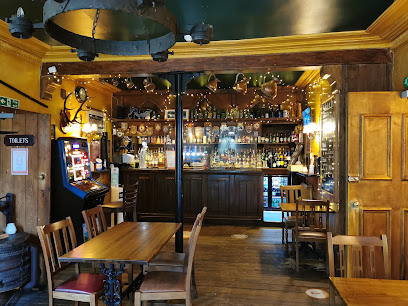
The Village Rest Luss
Experience delightful dining at The Village Rest in Luss, offering a variety of local dishes, cozy ambiance, and stunning views of Loch Lomond.
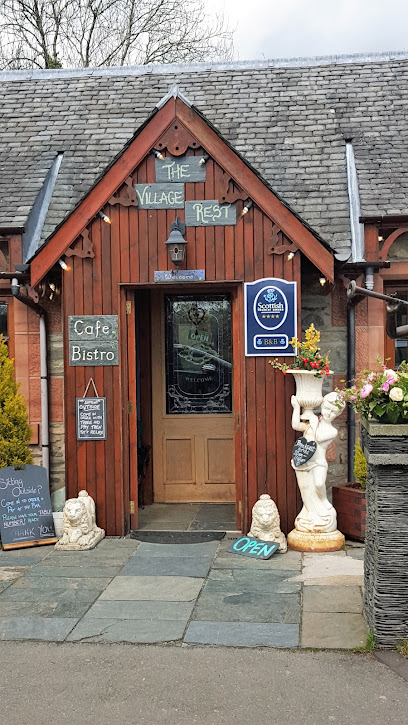
Slanj Restaurant
Experience authentic Scottish dining at Slanj Restaurant in Tarbet, with a cozy bar atmosphere and stunning views of the Arrochar Alps.
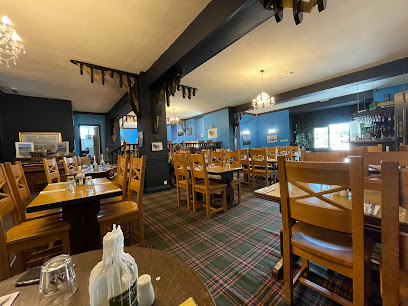
Ben Arthur Bothy
Experience the warmth and charm of Ben Arthur Bothy, a cozy pub in Arrochar offering delicious food and a great selection of drinks amidst stunning Highland scenery.
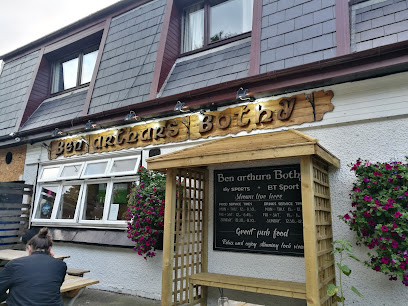
Colquhoun's Restaurant
Experience the flavors of Scotland at Colquhoun's Restaurant, where every meal comes with stunning views of Loch Lomond.

Waterhouse Inn Balloch
Discover the charm of Waterhouse Inn Balloch, where cozy accommodations meet a vibrant bar scene in the heart of scenic Balloch.

Dog House
Discover the delightful Dog House Pub in Balloch, a cozy retreat offering delicious food, local ales, and a welcoming atmosphere for every visitor.
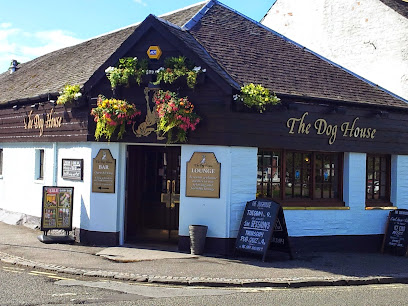
The Clansman Bar Restaurant
Experience authentic Scottish dining at The Clansman Bar Restaurant in Glasgow, offering delicious grilled dishes and a cozy atmosphere.
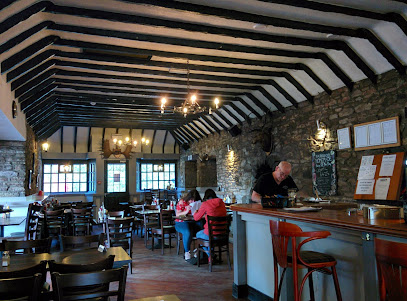
Mavi Kitchen & Bar
Discover Mavi Kitchen & Bar in Balloch for a delicious grill experience amidst stunning views and a warm atmosphere.
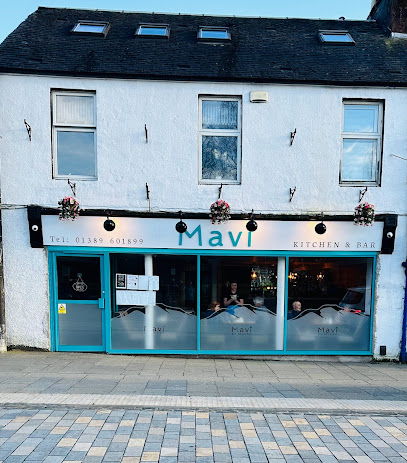
Inchmurrin Restaurant
Experience exquisite country cuisine at Inchmurrin Restaurant on Loch Lomond's enchanting Inchmurrin Island, surrounded by breathtaking landscapes.
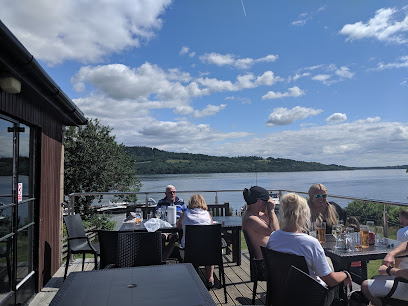
Local Phrases about Loch Lomond & The Trossachs National Park
-
- HelloHaw
[hɔː] - GoodbyeCheerio
[tʃɪərɪəʊ] - YesAye
[aɪ] - NoNaw
[nɔː] - Please/You're welcomePlease/You're welcome
[Please/You're welcome] - Thank youCheers
[tʃɪəz] - Excuse me/SorryPardon/Sorry
[pɑːdən/sɒri] - How are you?Hoo are ye?
[huː ɑːr jʊ] - Fine. And you?Fine. An' yersel?
[faɪn. ænd jʊəˈsɛl] - Do you speak English?Dae ye speak English?
[deɪ jʊ spiːk ˈɪŋɡlɪʃ] - I don't understandAh dinnae unnerstaun
[ɑː dɪnɪ un.dərˈstænd]
- HelloHaw
-
- I'd like to see the menu, pleaseAh'd like tae see the menu, please
[aɪd laɪk tə siː ðə ˈmɛnjuː pliːz] - I don't eat meatAh dinnae eat meat
[ɑː dɪnɪt iːt miːt] - Cheers!Slàinte!
[slæntʃə] - I would like to pay, pleaseAh wid like tae pay, please
[aɪ wʊd laɪk tə peɪ pliːz]
- I'd like to see the menu, pleaseAh'd like tae see the menu, please
-
- Help!Help!
[hɛlp] - Go away!Gae awa!
[ɡeɪ əˈweɪ] - Call the Police!Phone the Polis!
[fəʊn ðə ˈpɒlɪs] - Call a doctor!Phone a doctor!
[fəʊn ə ˈdɒktər] - I'm lostAh'm awa' ben
[aɪm lɒst] - I'm illAh'm unweel
[aɪm ɪl]
- Help!Help!
-
- I'd like to buy...Ah'd like tae buy...
[aɪd laɪk tə baɪ] - I'm just lookingAh'm juist haein a wee keek
[aɪm dʒʌst ˈhɑːvɪn ə wiː kiːk] - How much is it?Hoo much is it?
[huː mʌtʃ ɪz ɪt] - That's too expensiveThat's ower dear
[ðats ˈoʊər dɪr] - Can you lower the price?Can ye gie's a better price?
[kæn jiː gaɪz ə ˈbɛtər praɪs]
- I'd like to buy...Ah'd like tae buy...
-
- What time is it?Whit time is it?
[wɪt taɪm ɪz ɪt] - It's one o'clockIt's yin o'clock
[ɪts wʌn əˈklɒk] - Half past (10)Hauf past (10)
[hɑf pɑst (tɛn)] - MorningMornin'
[ˈmɔːrnɪn] - AfternoonEfternuin
[ˈɛftərˌnuːn] - EveningE'enin'
[ˈiːnɪn] - YesterdayYestreen
[ˈjɛstrin] - TodayThe day
[ðə deɪ] - TomorrowThe morn
[ðə mɔːrn] - 1Ane
[eɪn] - 2Twa
[twɑː] - 3Three
[θriː] - 4Fower
[faʊər] - 5Fie
[faɪ] - 6Sax
[sæks] - 7Seiven
[ˈsevən] - 8Aucht
[ɔːxt] - 9Naw
[nɔː] - 10Ten
[tɛn]
- What time is it?Whit time is it?
-
- Where's a/the...?Whaur's a/the...?
[wɛrz əði] - What's the address?Whit's the address?
[wɪts ði ˈædrɪs] - Can you show me (on the map)?Can ye shaw me (on the map)?
[kæn jiː ʃoʊ miː (ɒn ðə mæp)] - When's the next (bus)?Whit time's the next (bus)?
[wɪt taɪmz ðə nɛkst (bʌs)] - A ticket (to ....)A ticket (tae ....)
[eɪ ˈtɪkɪt (tə)]
- Where's a/the...?Whaur's a/the...?
History of Loch Lomond & The Trossachs National Park
-
The history of Loch Lomond & The Trossachs National Park dates back to prehistoric times. Archaeological evidence indicates that humans have inhabited the area for thousands of years. Mesolithic hunter-gatherers roamed the woodlands, and Neolithic farmers cultivated the fertile lands around the lochs. The presence of ancient standing stones and burial cairns attests to the long-standing human connection with this rugged landscape.
-
During the early medieval period, the area that is now Loch Lomond & The Trossachs National Park was part of the Kingdom of the Picts. The Picts were a confederation of tribes known for their unique symbol stones and fierce resistance against Roman invaders. The enigmatic Pictish symbols carved into stones and artifacts found in the region continue to intrigue historians and archaeologists.
-
The Trossachs became a stronghold for various Scottish clans during the late medieval period. Clans such as the MacGregors, MacFarlanes, and Buchanans held significant power and influence in the area. Clan feuds and battles for territory were common, and the rugged terrain provided a natural defense against rival factions and invaders. The legacy of these clans is still evident in the names of mountains, glens, and lochs throughout the park.
-
One of the most legendary figures associated with Loch Lomond & The Trossachs is Rob Roy MacGregor, an infamous outlaw and folk hero. Born in 1671, Rob Roy became a symbol of resistance against the British authorities and the exploitation of the Highlanders. His exploits, including cattle rustling and daring escapes, have been immortalized in literature and folklore. Visitors can explore sites linked to Rob Roy's life, such as his birthplace at Glengyle and his grave in Balquhidder.
-
The Victorian era marked a significant turning point in the history of Loch Lomond & The Trossachs. Queen Victoria's visits to Scotland in the mid-19th century popularized the Highlands as a destination for the British aristocracy. Her travels inspired a romantic vision of the Scottish landscape, leading to an increase in tourism. The construction of railways and steamboats made the region more accessible, and the natural beauty of Loch Lomond and its surroundings became widely celebrated.
-
Loch Lomond & The Trossachs National Park was officially established in 2002, becoming Scotland's first national park. The creation of the park aimed to protect the area's unique natural and cultural heritage while promoting sustainable tourism. The park covers over 720 square miles and includes a diverse range of landscapes, from rolling hills and dense forests to serene lochs and rugged mountains. Its establishment marked a new era of conservation and appreciation for this historically rich region.
Loch Lomond & The Trossachs National Park Essentials
-
Loch Lomond & The Trossachs National Park is located in the heart of Scotland. The nearest major airports are Glasgow International Airport (approximately 30 miles away) and Edinburgh Airport (around 60 miles away). From Glasgow, you can take a train from Queen Street Station to Balloch, which is a gateway to the park. Buses also operate from Glasgow and Edinburgh to various points within the park. For those driving, the A82 road runs along the western shore of Loch Lomond, providing a scenic route into the park.
-
Within the park, transportation options include local buses and trains, particularly for traveling between larger towns such as Balloch, Callander, and Aberfoyle. Car rentals are available in nearby cities like Glasgow and Stirling, offering flexibility to explore at your own pace. Cycling is a popular way to get around, with numerous bike rental shops and well-marked trails. For those interested in water transport, there are regular boat tours on Loch Lomond, allowing for a unique perspective of the park's beauty.
-
The official currency in Scotland is the British Pound Sterling (GBP). Credit and debit cards are widely accepted in hotels, restaurants, and shops within the park. However, it is advisable to carry some cash, especially when visiting more remote areas where card facilities may be limited. ATMs are available in larger towns such as Balloch, Callander, and Aberfoyle.
-
Loch Lomond & The Trossachs National Park is generally a safe destination for tourists. However, it is always wise to take standard precautions such as avoiding isolated areas at night and securing your belongings. While there are no specific high-crime areas targeting tourists, it is advisable to stay vigilant and aware of your surroundings, particularly in busy tourist spots. Always follow local safety guidelines when participating in outdoor activities and be prepared for rapidly changing weather conditions.
-
In case of emergency, dial 999 for immediate assistance from police, fire, or medical services. The nearest hospitals with emergency departments are in Glasgow and Stirling. For minor health issues, pharmacies can be found in larger towns within the park. It is recommended to have comprehensive travel insurance that covers medical emergencies. Always inform someone of your plans when hiking or engaging in outdoor activities.
-
Fashion: Do wear layers and waterproof clothing, as the weather can change rapidly. Comfortable walking shoes are essential. Religion: Do respect local religious sites. While there are no strict dress codes, modest clothing is appreciated when visiting churches. Public Transport: Do be punctual and considerate to fellow passengers. Don't eat or drink on public transport. Greetings: Do greet people with a friendly 'Hello' or 'Hi'. A handshake is appropriate in more formal settings. Eating & Drinking: Do try local dishes and beverages. Don't leave a tip unless it is clear that service is not included, as tipping is not obligatory in Scotland.
-
To experience Loch Lomond & The Trossachs National Park like a local, consider visiting during the shoulder seasons (spring and autumn) to avoid the peak tourist crowds and enjoy the park's natural beauty in peace. Engage with local residents in smaller villages such as Luss and Killin, who are often willing to share stories and insider tips. Participate in local events and festivals to immerse yourself in the culture. Don't miss out on lesser-known trails and viewpoints for some of the best scenic spots away from the main tourist routes.
Trending Landmarks in Loch Lomond & The Trossachs National Park
-
Loch Lomond Shores
-
SEA LIFE Loch Lomond Aquarium
-
Falls Of Falloch
-
Loch Lomond
-
Balloch Castle & Country Park
-
Queen Elizabeth Forest Park
-
Loch Lomond Faerie Trail
-
Inveruglas Pyramid - An Ceann Mòr
-
Ben Lomond
-
Maid of The Loch
-
RSPB Scotland Loch Lomond
-
Conic Hill
-
Loch Lomond National Nature Reserve (Inchcailloch)
-
Luss View Point
-
Duck Bay
Nearby Cities to Loch Lomond & The Trossachs National Park
-
Things To Do in Stirling
-
Things To Do in Edinburgh
-
Things To Do in Dundee
-
Things To Do in Inverness
-
Things To Do in Belfast
-
Things To Do in Ramsey
-
Things To Do in Kirk Michael
-
Things To Do in Laxey
-
Things To Do in Aberdeen
-
Things To Do in Peel
-
Things To Do in Onchan
-
Things To Do in Derry
-
Things To Do in Douglas
-
Things To Do in Ballasalla
-
Things To Do in Port Erin












